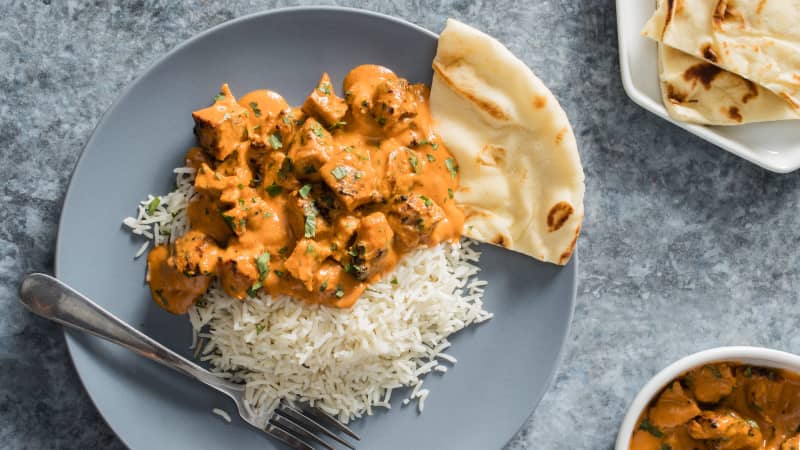My Goals & Discoveries
Chicken with tandoor-like char
Because the yogurt’s milk proteins and lactose brown quickly and deeply, coating chicken thighs—which are less prone to overcooking than leaner breasts—in yogurt and broiling them creates deep char on their exteriors, imitating the color and flavor of chicken roasted in a superhot tandoor.
Rich, creamy body
Whisking solid butter into the finished sauce gives it richness and viscosity, and heavy cream adds lush, velvety body. Pureeing the sauce makes it silky-smooth.
Vibrant flavor
Swapping out liquid-y chopped or crushed tomatoes for a generous ½ cup of superconcentrated tomato paste and some water adds acidity and vivid color to the sauce without diluting its richness. Plenty of aromatics and spices lend the sauce fragrance and depth.








